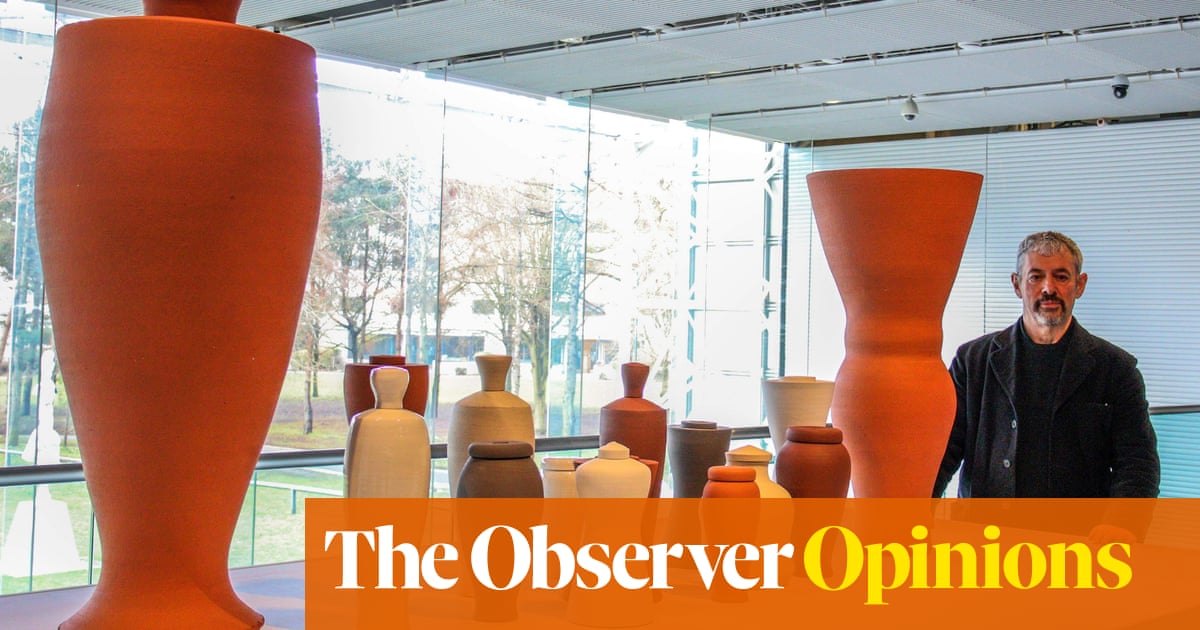
Britain is good at remembrance. No monument is better known in this country than the Cenotaph in Whitehall, designed by Edwin Lutyens to commemorate the dead of the First World War; in the 21st century, barely a football match kicks off without a minute’s silence in honour of someone or something. Sanctioned, sponsored recollection is one of our national skills, like queueing or talking about the weather.
But there are, too, strange and yawning gaps in the patchwork of our collective memory. There is no public memorial in the UK to the estimated 228,000 victims of the Spanish flu epidemic of 1918, and, so far, it has been left to volunteers to pay tribute to the more than 220,000 people whose deaths are associated with Covid-19, in the form of the National Covid Memorial Wall on the south bank of the Thames. On Wednesday, it will be three years since the first lockdown of the pandemic began, yet the National Day of Reflection that will mark this anniversary is not precisely official but organised by a single charity, Marie Curie. Visit the website, and you will find various fuzzy suggestions involving the lighting of candles, the sending of cards and the tying of yellow ribbons around trees.
At noon, we are invited to observe – yes – a minute’s silence. Are people likely to honour this? My strong guess is that they won’t. And not only because it has been so little publicised. In March 2021, when the last lockdown ended, a veil began swiftly to fall and, ever since, we have been enveloped by a disconcerting blankness. It’s not, I think, that we don’t want to remember. Nor is it that we long to forget (though we do, of course). Rather, it’s just that we are in need of some help: of some proper mechanism or device. The scale of our loss cows us. How do we process such unimaginably huge figures? How do we hold them in our mind without being pulverised by fear and sadness? So far, the blankness has been our only answer to such questions.
During the pandemic, there was a lot of talk about art: perhaps it would ride to our rescue. Personally, I wasn’t convinced. Having read some of the novels that came out then, I thought that if art were ever to rise to the challenge, it would take at least a decade. But then, last week, at the Sainsbury Centre at the University of East Anglia, I read the words “Sue was musical, playing the cornet in Wrentham Brass Band”, and I changed my mind in as long as it took for my eyes to fill with tears. Though I didn’t know the woman whose life was being described (her name was Susan Faith and she was a police officer in Lowestoft), or even if she had died of Covid-19, in that moment, she became a proxy for me for the thousands lost since 2020. I was so undone by this thought, I had to sit down for a few minutes. By the time I stood up again, however, I was aware of a sense of something having lifted. People write glibly about the solace of art, and I’m no exception. Nevertheless, here it was, as unmistakable as solid gold: consolation. It was so real to me – such a physical thing – I could have stowed it in my handbag.
The exhibition I was in Norwich to see is called Art, Death and the Afterlife, and it is a response to the pandemic by the ceramic artist Julian Stair, whose pots are in the collections of, among other institutions, the V&A and the British Museum. Since 2000, Stair has been making cinerary jars and memorial-based commissions for individuals. But for this show, he worked with the bereavement charity Cruse and the Norwich Death Cafe to facilitate conversations around loss that led eventually to some of those involved donating the ashes of their loved ones to him. Stair embedded this ash in clay, using it to create permanent memorials to the dead. When the exhibition ends, these memorials – there are seven: six representing the life of an individual, and one a married couple – will be given to their families.
On the day of my visit, Stair talked of the way that potters see vessels in anatomical terms. They have lips, necks and feet; gather them together and they form a family. Man, he said, has made funerary jars since Neolithic times; his own practice is a modern variation on something very old indeed.
But words – even when they come from the artist himself – take you only so far. Nothing prepared me for the contrast between the urns he’d thrown for the dead, so still and stark in their glass cases, and the short biographies their families had written, which can be read in a side gallery (the cause of their deaths has been withheld, but some, if not all, were indeed connected to Covid).
Our time on earth is only fleeting; one day, no one will remember a woman who loved dogs and potholing and playing the cornet. Yet the possibility exists that Stair’s beautiful jars, like the archaeological finds he has picked from the Sainsbury’s permanent collection to show alongside them, will survive for hundreds, if not thousands, of years.
While Susan Faith’s face, glimpsed only briefly by me in a smiling photograph, is already fading from my mind, I know that Stair’s pot in her name, made of Etruria marl and as brown as a conker, will stay with me for ever. Not just its physical presence, gently curved but slightly unfinished, as human beings are even at the end of their lives, but its wider meaning, too. Especially that. Stair has known loss himself, and he has used this, and his talent, to do something both generous and numinous. He has given us a way to remember: an image that may be understood, even as the numbers still can’t.
Rachel Cooke is an Observer columnist












